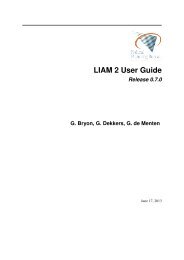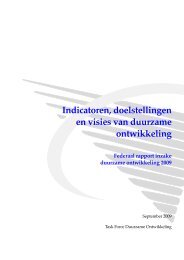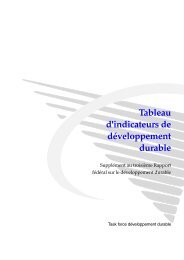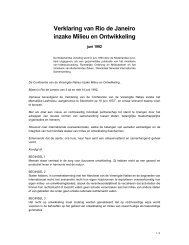long-term care use and supply in europe: projections for germany ...
long-term care use and supply in europe: projections for germany ...
long-term care use and supply in europe: projections for germany ...
You also want an ePaper? Increase the reach of your titles
YUMPU automatically turns print PDFs into web optimized ePapers that Google loves.
LONG-TERM CARE USE AND SUPPLY IN EUROPE | 27<br />
Conclusion<br />
Us<strong>in</strong>g SHARE data, factors affect<strong>in</strong>g current <strong>use</strong> of <strong>for</strong>mal <strong>and</strong> <strong>in</strong><strong>for</strong>mal <strong>care</strong> by persons aged 65 <strong>and</strong><br />
over, liv<strong>in</strong>g at home, have been exam<strong>in</strong>ed <strong>for</strong> Germany, the Netherl<strong>and</strong>s <strong>and</strong> Spa<strong>in</strong>, countries<br />
representative of different LTC systems. The analysis has foc<strong>use</strong>d on help with personal <strong>care</strong> tasks or<br />
activities of daily liv<strong>in</strong>g. Help with ho<strong>use</strong>hold tasks has not been <strong>in</strong>cluded. Probabilities of us<strong>in</strong>g <strong>for</strong>mal<br />
personal <strong>care</strong>, either alone or <strong>in</strong> comb<strong>in</strong>ation with <strong>in</strong><strong>for</strong>mal personal <strong>care</strong>, have been found to be much<br />
higher <strong>in</strong> the Netherl<strong>and</strong>s than <strong>in</strong> Spa<strong>in</strong> <strong>and</strong> Germany, while probabilities of us<strong>in</strong>g <strong>in</strong><strong>for</strong>mal personal<br />
<strong>care</strong>, either alone or <strong>in</strong> comb<strong>in</strong>ation with <strong>for</strong>mal personal <strong>care</strong>, are much higher <strong>in</strong> the latter countries.<br />
Mult<strong>in</strong>omial regression models have further showed that age, ho<strong>use</strong>hold composition <strong>and</strong> ADL or IADL<br />
limitations are important de<strong>term</strong><strong>in</strong>ants of personal <strong>care</strong> utilisation <strong>in</strong> all three countries. The same<br />
factors have consistently been found to be strongly associated with home <strong>care</strong> <strong>use</strong> <strong>in</strong> previous studies.<br />
However, model results have also shown that age gradients of <strong>care</strong> <strong>use</strong> differ considerably between the<br />
three countries, as does the impact of potential availability of <strong>in</strong><strong>for</strong>mal <strong>care</strong>. While <strong>in</strong> Germany, higher<br />
age significantly <strong>in</strong>creases the chances of comb<strong>in</strong><strong>in</strong>g <strong>for</strong>mal <strong>and</strong> <strong>in</strong><strong>for</strong>mal <strong>care</strong>, with no or little effect on<br />
us<strong>in</strong>g <strong>for</strong>mal or <strong>in</strong><strong>for</strong>mal <strong>care</strong> only, <strong>in</strong> the Netherl<strong>and</strong>s, higher age predom<strong>in</strong>antly <strong>in</strong>creases <strong>use</strong> of <strong>for</strong>mal<br />
<strong>care</strong>, but has less <strong>in</strong>fluence on us<strong>in</strong>g <strong>in</strong><strong>for</strong>mal <strong>care</strong>, either alone or <strong>in</strong> comb<strong>in</strong>ation with <strong>for</strong>mal <strong>care</strong>. In<br />
Spa<strong>in</strong>, age is significantly associated with us<strong>in</strong>g <strong>in</strong><strong>for</strong>mal <strong>care</strong> only, but not with the other categories of<br />
<strong>care</strong> <strong>use</strong>. Look<strong>in</strong>g at ho<strong>use</strong>hold composition, liv<strong>in</strong>g alone <strong>in</strong>creases the likelihood of us<strong>in</strong>g <strong>for</strong>mal <strong>care</strong><br />
only, but has no impact on <strong>use</strong> of <strong>in</strong><strong>for</strong>mal <strong>care</strong> <strong>in</strong> the Netherl<strong>and</strong>s. In contrast, <strong>in</strong> Spa<strong>in</strong> it decreases the<br />
likelihood of us<strong>in</strong>g <strong>in</strong><strong>for</strong>mal <strong>care</strong>, but has no impact on <strong>use</strong> of <strong>for</strong>mal <strong>care</strong> only. In Germany, older<br />
persons liv<strong>in</strong>g alone have a lower probability of us<strong>in</strong>g <strong>in</strong><strong>for</strong>mal <strong>care</strong> only <strong>and</strong> a higher probability of<br />
us<strong>in</strong>g <strong>for</strong>mal <strong>care</strong> only. F<strong>in</strong>ally, some evidence has been found <strong>for</strong> country differences <strong>in</strong> the association<br />
of <strong>care</strong> <strong>use</strong> <strong>and</strong> need factors.<br />
Given the generally strong association of personal <strong>care</strong> <strong>use</strong> with ADL limitations <strong>and</strong> the fact that<br />
numbers of ADL dependent persons are projected to <strong>in</strong>crease considerably <strong>in</strong> future years, one can<br />
expect considerable <strong>in</strong>creases <strong>in</strong> future numbers of <strong>in</strong><strong>for</strong>mal <strong>and</strong> <strong>for</strong>mal <strong>care</strong> <strong>use</strong>rs <strong>in</strong> all three countries.<br />
However, the present analysis suggests that the impact of demographic age<strong>in</strong>g <strong>and</strong> other societal trends,<br />
like chang<strong>in</strong>g liv<strong>in</strong>g arrangements of older people, might well be different, as the association of <strong>care</strong> <strong>use</strong><br />
with age <strong>and</strong> ho<strong>use</strong>hold composition varies across countries. Us<strong>in</strong>g results of the analysis of<br />
de<strong>term</strong><strong>in</strong>ants of <strong>for</strong>mal <strong>and</strong> <strong>in</strong><strong>for</strong>mal <strong>care</strong> <strong>use</strong>, <strong>projections</strong> have been made of the numbers of older<br />
persons us<strong>in</strong>g <strong>for</strong>mal <strong>and</strong> <strong>in</strong><strong>for</strong>mal <strong>care</strong> between 2010 <strong>and</strong> 2060. The projection model <strong>and</strong> projection<br />
results are discussed <strong>in</strong> Chapter 4.<br />
References<br />
Andersen, R.M. (1995), “Revisit<strong>in</strong>g the behavioral model <strong>and</strong> access to medical <strong>care</strong>: does it matter?”,<br />
Journal of Health <strong>and</strong> Social Behavior, 36(1), 1-10.<br />
Andersen, R.M. (2008), “National health surveys <strong>and</strong> the behavioral model of health services <strong>use</strong>”,<br />
Medical Care, 46(7), 647-653, doi:10.1097/MLR.0b013e31817a835d.<br />
Andersen, R.M. <strong>and</strong> J.F. Newman (1973), “Societal <strong>and</strong> <strong>in</strong>dividual de<strong>term</strong><strong>in</strong>ants of medical <strong>care</strong><br />
utilization <strong>in</strong> the United States”, Milbank Quarterly, 51(1), 95-124.<br />
Bonneux, L., N. van der Gaag, G. Bijwaard <strong>and</strong> J. de Beer (2011), Forecast<strong>in</strong>g disability <strong>in</strong> the<br />
European Union, Nidi, Den Haag.<br />
Bonsang, E. (2009), “Does <strong>in</strong><strong>for</strong>mal <strong>care</strong> from children to their elderly parents substitute <strong>for</strong> <strong>for</strong>mal <strong>care</strong><br />
<strong>in</strong> Europe?”, Journal of Health Economics, 28(1), 143-154, doi:10.1016/j.jhealeco.2008.09.002.<br />
Van den Bosch, K., P. Willemé, J. Geerts, J. Breda, S. Peeters, S. Van De S<strong>and</strong>e, F. Vrijens et al. (2011),<br />
Residential <strong>care</strong> <strong>for</strong> older persons <strong>in</strong> Belgium: Projections 2011-2025 (No. 167A), KCE Reports,<br />
Belgian Health Care Knowledge Center, Brussels.
















